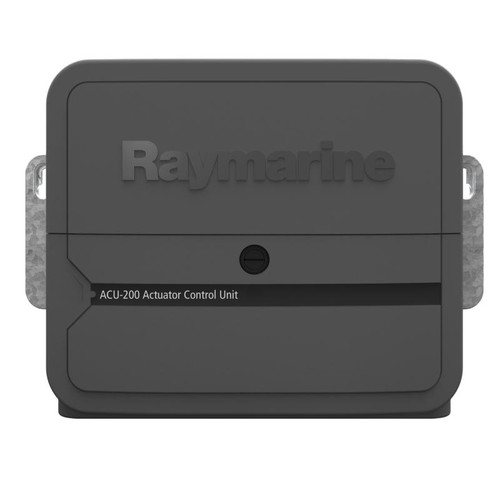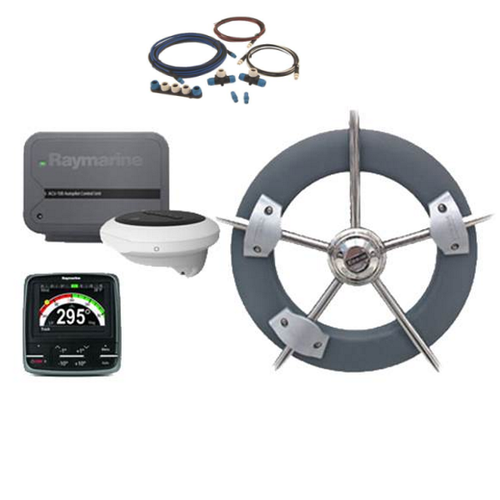The rugged ACU (Actuator Control Unit) delivers reliable autopilot drive power and also provides power to the SeaTalkng bus.
Raymarine's ACU-300 supports Constant Running Hydraulic Pump drives (12V or 24V)
| Nominal Power supply: | 12 V or 24 V |
| Operating voltage range: | 10.8 V to 31.2 V dc |
| Drive Current output: | Maximum continuous 5 A at supply voltage |
| Drive Clutch output: | No clutch connection |
| Connections: | Rudder reference sensor, Sleep switch, Power, Solenoid drive out/ return, Ground |
| Power consumption (standby) main power supply: | 300 mA at 12V / 24V |
| Power consumption (standby) SeaTalkng power supply: | No power supply to SeaTalkng |
| SeaTalkng LEN (Load Equivalency Number): | 1 |
| SeaTalkng power out: | 3 A at 12 V (fuse protected at 3 A) |
| Data connections: | SeaTalkng |
| Installation environment: | Operating temperature: -20ºC to +55ºC (-4ºF to +131ºF) Storage temperature: -30ºC to +70ºC (-22ºF to +158ºF) Relative humidity: max 93% |
| Waterproof rating: | Drip resistant |
| Weight: | 2.2kg (4.84 lbs) |
| Conformance: | Europe: 2004/108/EC Australia and New Zealand: C-Tick, Compliance Level 2 |
Selecting an Autopilot Control Unit (ACU)
The rugged ACU (Actuator Control Unit) delivers reliable autopilot drive power and also provides power to the SeaTalkng bus. Choose the ACU that fits your steering type:
| Autopilot Control Units | Supported Drives |
| ACU-100 | Wheel, tiller and 0.5 ltr Hydraulic |
| ACU-150 | Type-1 Hydraulic Drive Unit |
| ACU-200 | Type 1 Raymarine hydraulic, linear and rotary mechanical drives |
| ACU-300 (this product) | For solenoid controlled steering systems and Raymarine constant running hydraulic pumps |
| ACU-400 | Type 2 and 3 Raymarine hydraulic, linear, and rotary mechanical drives |
Your Raymarine Evolution autopilot system
EV-1 Cockpit and Inboard Autopilots
EV-1 autopilots consist of a Control Head, EV-1 Sensor, Autopilot Control Unit (ACU) and drive unit. The drive unit (inboard mechanical/ hydraulic or cockpit mounted) and correct ACU for your vessel is dependent on the steering system and displacement of the vessel itself.












